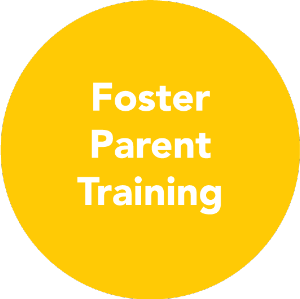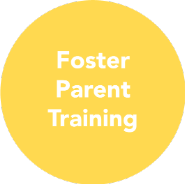Adriel Blog > June 6, 2024
Children’s Safety in the Summer: Tips for Foster Families
Summer is a time for exploration, relaxation, and creating lasting memories. For foster families, it can also be an opportunity to bond and create a sense of security. We are all for fun, and we’ll dive into that next month with a great summer activity guide. Because we always want to put safety first, we’re kicking off the summer with some important reminders about children’s safety and special considerations for foster families.
Ensure Children’s Safety First
There’s plenty of fun to be had during the summer months, much of it outdoors. That means we need to think about all children’s safety in the elements like heat and water, as well as environmental and equipment considerations for places like playgrounds and neighborhood parks. Here are a few of the biggest safety tips to keep in mind for all kids.
Don’t Get Burned
Sun and heat safety are essential. Be sure that your kids have access to adequate hydration, high sun protection factor (SPF 30+) sunscreen, and shade during outdoor activities. Kids (and all of us) can get a sunburn even when it’s not sunny! Don’t forget the tricky spots like ears, necklines, and tops of feet and toes. Educate kids on recognizing signs of heat-related illness, and what to do if they experience them. Here are the symptoms of heat exhaustion to watch for:
• Headache
• Nausea
• Dizziness
• Weakness
• Irritability
• Thirst
• Heavy sweating
• Elevated body temperature
• Decreased urine output
Heat exhaustion can lead to a more severe situation called heat stroke, so it’s important to notice the signs quickly for children’s safety. If your kids notice any of these symptoms, they should take a break, find someplace cool, and sip some water until they feel better.
Water Safety IS Children’s Safety
We can’t over emphasize the importance of water safety to ensure all children’s safety. In addition, foster kids may need extra supervision around water until you become familiar with their capabilities and experiences. Here are our most important water safety recommendations:
• Age-specific and skill-based swimming lessons can be a great combination of activity and safety.
• Equip all children with appropriate flotation devices.
• If you have a pool in the backyard, keep it gated and locked when not in use.
• Always make sure there is a trained lifeguard on duty in public pool or beach areas and consider a buddy system. We do not recommend allowing children to swim alone.
• Be sure to reinforce all posted rules at the pool or the beach – they're there for good reasons!
• Teach the kids basic water safety skills for both pools and natural bodies of water. That can be things like:
o Staying in water shallow enough that they can stand with their head and shoulders above the water until they are proficient swimmers.
o Never diving in the shallow end.
o Knowing how to tread water with minimal exertion
o Making sure the lifeguard is always within eyesight and/or shouting distance
• If the kids and family swim or play in rivers, lakes, or even the ocean, think about added measures for children’s safety like water shoes to protect their little feet from things like sharp shells, slippery rocks, and aquatic creatures.
• In the ocean and even in some lakes, there can be strong undertows, and rivers can have rapids, so make sure to hold onto little ones and prepare the older kids for how to manage the waves and currents.
Don’t Play Around with Safety
At the local playground and in neighborhood backyards, check for any safety hazards before allowing children to play on equipment. Here are some of our top playground safety recommendations:
• Explain playground rules and etiquette to ensure safe and enjoyable playtime.
• Communicate with your children about personal safety and set clear boundaries in public spaces.
• Encourage kids to be alert and attentive to their surroundings.
• Don’t get distracted – offer guidance and support while they navigate outdoor activities, interact with peers, and respond to adults.
For more children’s safety tips, check the National Safety Council. They have a specific section for parents and caregivers.
Our Role Helping Parents with Children’s Safety
As a foster care agency in Ohio, we are always thinking about how to best serve and care for foster families and foster children. Because accidents can happen in the heat, sun, water, playground, or anywhere your family is enjoying the summer, we recommend that all parents learn cardiopulmonary resuscitation (CPR) to take fast action while also calling 911. CPR provides peace of mind and preparation to be ready for anything and reinforces children’s safety.
CPR is just one of the specialized training programs we offer for foster families, and we recommend it for all parents. Check out this and other training programs available to foster parents in Ohio.
Communication is Key for Children’s Safety
Open communication and trust are essential for your foster children’s safety. Encourage them to voice their concerns and interests regarding summer activities. This creates a safe space for them to express themselves and helps you plan activities that everyone enjoys and feels safe doing.
For more ideas on supporting foster children’s safety during the summer months, check out the National Foster Parent Association, a non-profit organization that advocates for foster parents and children.









